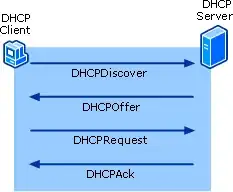As we know there are 4 types of packets involved when a client wants to get an IPv4 address from DHCP Server. These can be seen in the image bellow (from Microsoft web site).

From the perspective of data link layer (Layer 2 of OSI model) frames sent from client to the server are always broadcast (DISCOVER & REQUEST) but the other two can be either broadcast or unicast depending on how the broadcast-flag option is set by the client.
I know this flag can be changed in cisco IOS using this command:
R(config)# [no] ip dhcp-client broadcast-flag
My question is how I can change this flag in Windows or Linux?
BTW I just want to know this out of curiosity and I don't have any special needs for that. I tested on Windows and Linux and know that this flag is set to 0 so those frames are sent in unicast.
